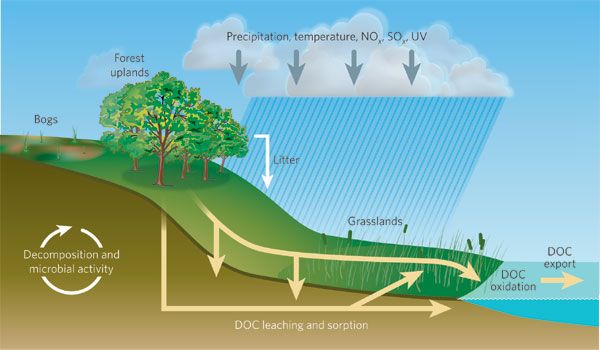Chemicals play a critical role in modern society, with applications ranging from agriculture and manufacturing to healthcare and technology. However, the widespread use of chemicals also has significant implications for the environment. Environmental chemistry is the study of the chemical processes that occur in the environment and how human activities can impact these processes. In this article, we will explore how chemicals can impact nature and the importance of understanding these interactions.
The Basics of Environmental Chemistry
Environmental chemistry is a multidisciplinary field that combines principles of chemistry, biology, and ecology to study the impact of chemicals on the environment. One of the key areas of focus in environmental chemistry is the study of pollutants, which are substances that can harm living organisms or disrupt ecosystems.
Chemicals can enter the environment through various pathways, including industrial processes, agricultural activities, and everyday household products. Once released into the environment, chemicals can undergo a series of chemical reactions and transformations that can impact soil, water, and air quality.
The Impact of Chemicals on Nature
Chemicals can have a wide range of impacts on nature, depending on their properties and concentrations. Some of the key ways in which chemicals can impact the environment include:
1. Pollution of Water Sources
One of the most significant impacts of chemicals on nature is the pollution of water sources. Industrial chemicals, pesticides, and fertilizers can leach into groundwater and surface water, leading to contamination of drinking water supplies and harm to aquatic ecosystems. This can result in reduced biodiversity, harm to fish and other aquatic organisms, and long-term damage to ecosystems.
2. Soil Contamination
Chemicals can also contaminate soil, affecting plant growth and soil health. Pesticides and heavy metals can accumulate in soil over time, posing risks to plant and animal species. Soil contamination can also impact agricultural productivity and human health if crops grown in contaminated soil absorb harmful chemicals.
3. Air Pollution
Chemicals released into the air can lead to air pollution, which can have far-reaching impacts on human health and the environment. Vehicle emissions, industrial processes, and burning of fossil fuels can release pollutants such as nitrogen oxides, sulfur dioxide, and particulate matter into the atmosphere, leading to smog, acid rain, and respiratory problems.
The Importance of Understanding Chemical Interactions
Given the potential for chemicals to impact nature in negative ways, it is crucial to understand how different chemicals interact with the environment and living organisms. By studying environmental chemistry, researchers can identify potential risks associated with chemical exposure and develop strategies to mitigate these risks.
For example, environmental chemists may study the fate and transport of pollutants in water systems to assess the risk of contamination and develop remediation strategies. They may also study the bioaccumulation of chemicals in food chains to understand how pollutants can move through ecosystems and impact wildlife populations.
Conclusion
Environmental chemistry plays a crucial role in understanding how chemicals can impact nature and the environment. By studying the interactions between chemicals and ecosystems, researchers can identify potential risks to human health and biodiversity and work towards finding solutions to mitigate these risks. As we continue to rely on chemicals for various aspects of modern life, it is essential to prioritize the responsible use and disposal of chemicals to protect the environment for future generations.
For more information on environmental chemistry and its impact on nature, consult with a professional environmental chemist or visit reputable websites like the Environmental Protection Agency (EPA) or the American Chemical Society.
